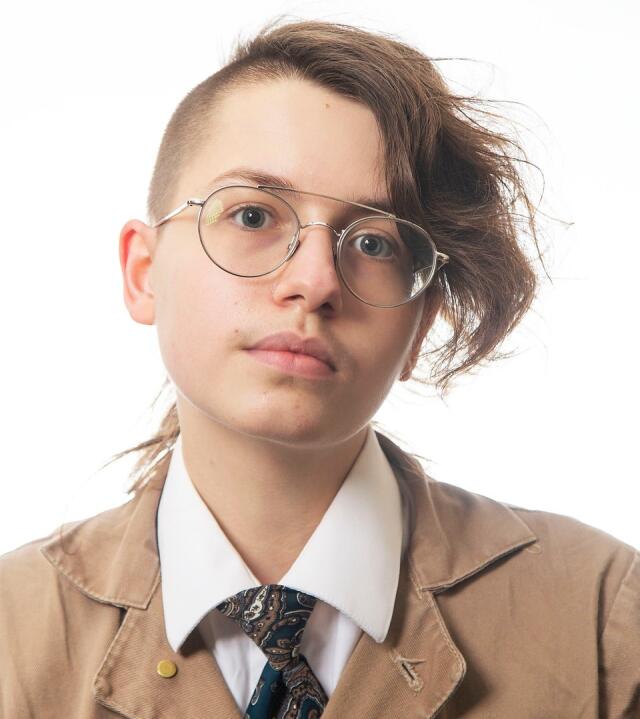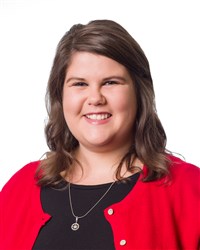As the month of November comes to a close, the EDGE office would like to uplift the importance of Native American Heritage Month. Every November, Native American Heritage Month celebrates and invites reflection and learn about the continued legacy and history of Native American and Indigenous tribal nations. To commemorate the month, EDGE team members Carlotta Penn and Neal McKinney interviewed Ohio State staff member, Madison Eagle and student, Arvcúken Noquisi to honor their perspectives and insights.
The Office of Engagement, Discovery, and Global Education would like to acknowledge that the land The Ohio State University occupies is the ancestral and contemporary territory of the Shawnee, Potawatomi, Delaware, Miami, Peoria, Seneca, Wyandotte, Ojibwe, and Cherokee peoples. Specifically, the university resides on land ceded in the 1795 Treaty of Greeneville and the forced removal of tribes through the Indian Removal Act of 1830. We want to honor the resiliency of these tribal nations and recognize the historical contexts that have and continue to affect the Indigenous peoples of this land.
Arvcúken Noquisi (They/Them/Theirs)
Tell us more about your studies and your interest in experimental filmmaking and radio communication technology. What do you hope to do with your studies following your time at Ohio State?
My two majors have aligned very neatly together. Both Moving Image Production and Sonic Arts have provided important methods of audiovisual self-expression and helped me locate my personal voice in artmaking.
I can explore everything and anything through experimental filmmaking. I have focused a lot of my films on Indigenous presence and relationship to the film medium itself. I utilize filmmaking as a conduit for my own learning. I have been thinking a lot about the inherent subject-audience relationships of a film, watched-and-watcher, and how to express Indigenous perspective and experience under the weight of these dynamics. How can I confront these dynamics in my art? I tried this in my 2020 film Este-cate.
Regarding radio communication technology – I am fascinated with both broadcast radio and amateur radio. I think about artistic usage of sound, like in KPFA’s “Over the Edge” sound collage broadcasts. The ephemeral quality of a live transmission has so much potential, and the vast relationship radio science has to other subjects keeps me in a constant state of curiosity.
I want to utilize my artmaking skills on a local, community level once I leave Ohio State. I want to locate fulfillment beyond institutional or industry conventions. But that is rather idealistic.
How does your indigenous identity of Tsalagi and membership to the Muscogee Nation influence your lens of storytelling? What are some of the stories you feel need to be told that haven’t been told?
My mom’s side is Mvskoke and my dad’s side is Tsalagi. I grew up in Northwest Arkansas, and we traveled to and from East Oklahoma practically weekly to visit family. From this I think I have found a fascination with the concept of dislocation, with travel, with highways. The complexity of Indigenous identity and all of the connected pieces to one’s self-perception is something I am constantly in reflection of.
The stories that need to be told are already being told by Indigenous artists and creators. Access to greater monetary and audience support outside of Indigenous communities remains dependent on industries built out of settler-colonial misperceptions and forced invisibility of Indigenous people. I think about how Sierra Teller Ornelas’ show Rutherford Falls was cancelled by Peacock after season 2 because of a lack of viewership. How can Indigenous stories thrive when they’re competing against the mainstream popularity of Indian mascots and noble savage tropes? How can Indigenous stories prevail against the industry’s numerical viewership valuations when, according to IllumiNative, 72% of Americans never actually encounter or seek out information about Native Americans?
We recently learned about the project you produced, “Oh-vtvlvketv, To Go Further”. Can you talk about this project, and tell us how the Ohio State community can support its mission for the success of Native students?
“Oh-vtvlvketv, To Go Further” is my 2021 Global Arts & Humanities Society of Fellows research project. The research theme was “Extinction|Imagination.” Indigenous existence is so constantly assigned an extinction framework by settlers, in a way that disregards the responsibility and complicity of settler-colonial systems – and diminishes Indigenous power and self-determination.
I used this research space to document OSU’s institutional disregard for its Indigenous students and express how the Indigenous community here has been counteracting this neglect.
This year The Ohio State University has the lowest number of enrolled Indigenous students for a Fall semester, at 45 Alaska Native/Native American students across all campuses. In 2011 there were 169 Alaska Native/Native American students at OSU’s campuses. In 11 years we have experienced a 73% decrease in our Indigenous student population, with no sign of change to expect anything else for our future numbers.
For the past two years (and more) the Indigenous community at OSU has collectively been meeting with University administration to make our needs heard and catalyze action. So much labor, time, and emotional capacity has been put into these efforts. If we want a thriving and large Indigenous community here at OSU, we need to build support systems directly into the University’s infrastructure to increase Indigenous student admission and retention. We cannot expect Indigenous students, staff, or faculty to want to remain at OSU if we are not doing the work to support them here.
Madison Eagle (she/her/hers)
Tell us more about your role as the Coordinator for Belonging and Student Support, and what brings you joy in your work?
My role in the Student Life Center for Belonging and Social Change is to provide Indigenous students with space to be in community, to feel safe, to build bonds, and navigate OSU through a culturally inclusive lens. This means helping them to feel secure here at OSU and to help them navigate OSU in a way that honors their identity without conforming to the colonial centric institutional model. What has brought me the most joy is seeing students build their voice, stand up for their fellow students, and advocate for better experiences for Indigenous students at OSU. When they start as first years who are unsure what their place is, or if they should speak up, to see them grow and feel empowered to not only use their voice but to make change is the most fulfilling feeling.
Can you share the importance of advocacy for Indigenous students and why it matters?
We are at a Predominantly White Institution and Land Grant University in the state of Ohio. This creates a very specific void of knowledge when it comes to Indigenous Peoples. The most important advocacy I do is focused on education for folks who have not been exposed to Indigenous cultures or ways of knowing. There are no federally recognized tribes in Ohio, the tribes who once inhabited this land were forcibly removed, many forced to reservations out west. Among these groups were the Shawnee, who have claimed ancestral ties to the amazing Earthworks that exist here such as the Newark Earthworks or Serpent Mound. There is a great lack of understanding of the history of this land, and of the experiences throughout history of Indigenous Peoples. If I can educate some folks about our history and culture I feel that makes a huge impact on the experiences of Indigenous Peoples at OSU.
What are some of the most pressing support needs for Indigenous students? How can the OSU community do more to support them?
The experiences of Indigenous Peoples exist on a wide and complex spectrum. There are some students that come here from Reservations or from communities with strong Indigenous cultural ties. There are some students who come from schools where they were the only Indigenous person. All these experiences have different needs, but ultimately the most important need is to have community on campus that they can lean on for support. To have a space they can go to and not feel “on the clock” as they are often asked for their opinion or to share the experiences of all Indigenous peoples in their classroom or having to educate their roommates about why they are allowed to have tobacco in their dorm, or explaining all of American history. It is exhausting to be an Indigenous student here, and the best way that faculty and the OSU community can support Indigenous students is to check in with them, to give them a break, to make sure they know that they don’t have to defend the entirety of Indigenous Peoples in non-Indigenous spaces.
What does it mean to you to be Indigenous, and how do your intersectional identities as Tsalagi (Cherokee), Shawnee, Irish, American enrich your work?
Being Indigenous is a cultural identity, it is a political identity, it is a complicated experience especially living in Ohio my entire life. I grew up in a town with a Native American Mascot, being subjected to my high school classmates dressed in headdresses, “war paint”, doing the tomahawk chop, and more offensive practices, was very confusing and dehumanizing. Being in Indigenous spaces, visiting the Reservation and being told that I am not enough, that I am not Indigenous is heartbreaking and invalidating. It takes the support of community, of friends, family, and loved ones to not be debilitated by those experiences. The easy option would be to sit out, to hide, to avoid the topic of identity all together. But that is not how I was taught to be, that is not the values that I was raised with, advocacy and education are my guideposts. For everything we have come to know about our world, there is always an opportunity to question, how do I know that? Is that the whole story? Why was I taught this and who benefits from this narrative that I’m being taught? My identities inform these practices and emphasize that questioning authority, that thinking about alternatives, and carrying myself with the strength of all my ancestors is the most important thing I can do on this Earth.



